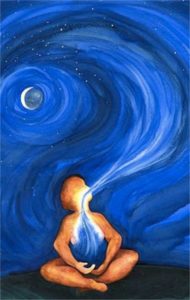Marist Spirituality – An Introduction – Part 10
A Spirit and a Body

Fr Maxime Petit’s declaration on arriving in Aotearoa-New Zealand that “We have come here to be messengers of the divine mercies,” indicates Fr Colin’s influence on him personally and points to that being likely too with other early Marist missionaries sent abroad.
From 1836 until 1849, Colin sent fifteen bands to Oceania, 117 missionaries in all. The first seven bands came to New Zealand as their mission or base. Included in the total number were members of Marcellin Champagnat’s brothers as well as lay people. Colin asked his missionaries to write to him twice a year. Beforehand, in his visitation of communities in France, he had made a point of gaining an insight into each man’s spiritually. In short, although he was by no means the only influence on them, Colin certainly helped shape these missionaries.
By 1936, the centennial of the Society of Mary, Peter Chanel was deemed a martyr and had been beatified. Marcellin Champagnat had been declared Venerable in 1920. Four other missionaries had been attacked and killed. Three others had been cannibalised. Another two had disappeared, presumably meeting that same fate. Tragically, the same went for the poor man sent to investigate what had happened to them all! Another priest had been poisoned. Fourteen men had drowned and four others had died at sea. One had contracted leprosy and died. Many others had also died from more natural causes such as malaria and tuberculosis. And yet they kept coming. By 1998 when the Oceania Province celebrated its centenary, some 700 Marists worldwide had served there as missionaries, but of these, 500 were from France alone! All of these men had been formed by Father Colin, either through his themes or his Constitutions. These also formed as it were, at least in part, their ‘missiology.’
To the extent that Jean-Claude Colin can be given any credit for the heroism of these missionaries, it is not because of his themes on their own, but that as Marists the men themselves had grounded these themes into concrete practices. And as a result, they lived and worked, as it were, close to and mindful of Mary, Christ, God. Colin believed so strongly that without this, these missionaries who had gone to Oceania to bring others to belief and a vibrant relationship with God, would only end up losing their own zeal and faith! Concrete practices were what he encouraged in them and indeed fought with bishops to preserve by keeping Marists together.
Religious are indeed fortunate in that their communities embody a rich variety of ways by which they acknowledge God, Mary, the saints and so maintain a close connection with them. As lay men and women, what practices would best help you also do this? A certain degree of solidarity also occurs when a few but varied practices are held in common.
As Marists there are some very obvious prayers, liturgical feasts and social occasions that can play a role in this and Colin certainly directed us to make good regular use of these. But typical of Colin, he also wanted us to have a particular angle on our prayers. Take the ‘Hail Mary’. A common Colinian practice was to begin and end each day by saying three Aves and a Sub Tuum. What mattered to Colin, however, was less which prayer is said, but that in praying it, we consciously turned to Mary acknowledging her presence with us and her desire to work through us. In short, we affirm her ongoing, vibrant connection with us and our desire to maintain this relationship.
Towards the end of his life Fr. Jean Coste, who had dedicated so much of his life researching Fr. Colin’s writings to the highest professional standards, became aware of a real danger. He realised that while Marists were encouraged and enlivened by his new discoveries of Colin’s themes, increasingly many of the concrete religious practices Colin had implemented for them were disappearing. Coste challenged this by pointing to a simple fact. “The separation of body and spirit has a name – it is called death!” (A Certain Idea of the Society of Mary).
A PRAYER TO MARY
Jesus, on the Cross, you assigned your mother Mary to live with your Beloved Disciple John as a tangible, living sign of your love and care for all disciples down throughout the ages.
And so Mary, without hesitation, may we ever join our prayers to yours:
“We fly to your protection,
O holy Mother of God.
Despise not our prayers in our necessities,
But deliver us from all dangers,
O glorious and blessed Virgin.”
(The “Sub Tuum”)
An Insight
“The Marist who wishes to live out the truth of his name will strive to put himself in the situation which gave rise to the Magnificat: the joyful awareness that my salvation comes from God; accepting the fact that this will be worked out in the course of my history, that set of circumstances of time and place which seem to have no importance for anybody but myself. To open oneself to a relationship with God is to accept this good news: he looked on the lowliness of his servant” (Gaston Lessard, Preliminary Reflections, Part 5).
The Practice
“Rising at 5.15. Holy Mass and other exercises” (St. Peter Chanel, Ever Your Poor Brother).
QUESTIONS TO PONDER
1. Did anything strike you as extraordinary in the Marist Pacific story? Is there anything that you want to say to God, or ask God for yourself from this?
2. What do you think Fr Jean Coste meant by declaring that a spirit on its own is insufficient: it has to have a body? Do you agree with him, believe this as strongly?

 Entries(RSS)
Entries(RSS)